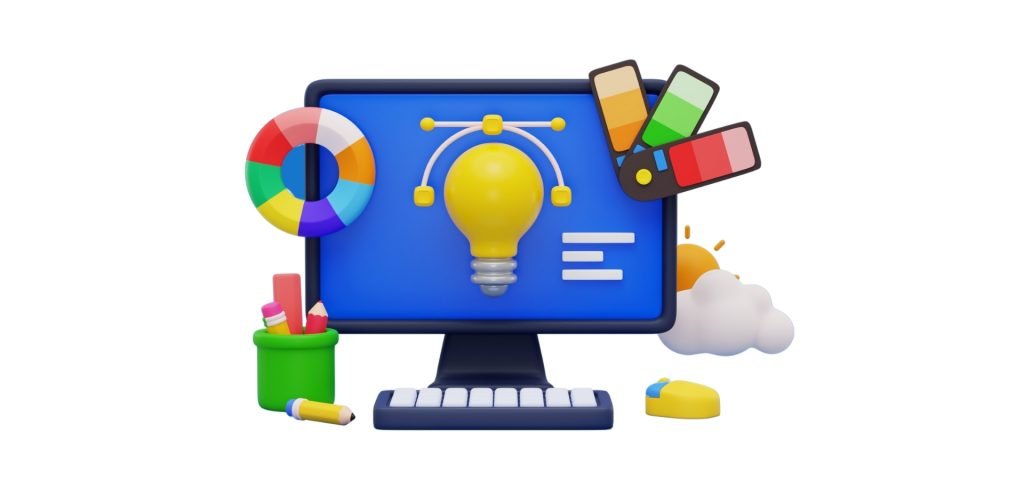UI design, also called user interface design, is the esthetically pleasing layout of a product’s user interface. It involves designing user interfaces, primarily for websites and mobile applications, with an eye toward esthetics. In addition to voice-activated interfaces, UI design also incorporates digital user interfaces (VUI).
A UI designer will create all of a product’s displays, along with the visual components and interactive features that encourage user involvement. They do this by guiding the user with elements like patterns, spacing, text, and color.
In addition to having to be extremely creative, UI designers also need to think like users, anticipating their needs at each level.
What is a User Interface?
An app, website, or device’s user interface is the point at which a human interacts with a computer (or, in the case of the voice user interface, an oral-auditory interface). It can include keyboards, screens, and the desktop’s appearance. Our comprehensive explanation of what a user interface can teach you more about it.
These three groups often make up user interface elements:
Controls that allow users to enter information into the system, such as a field where users can enter their email address to register.
Navigational elements, like an Android hamburger menu, that aid a customer in navigating a product or website.
Components that provide users with information, such as message boxes, progress bars, and notifications.
History of UI Design
Over 1.94 billion websites, over 4 million mobile applications, and an infinite number of UI designers were in charge of creating their visual and interactive components as of January 2019. UI design started small but has since grown to be one of the most well-known and creative professions in technology.
Computing technology with a touch keyboard was hailed as groundbreaking in the late 20th century. However, two UI advancements from the 1980s caused a seismic shift in how people used new technology. By 1988, Apple had sold 1 million Macintoshes, while Microsoft had released Windows 1.0 not long after. Businesses quickly grasped the importance of a visually appealing digital user interface in creating a memorable and pleasurable user experience. Beginning in the ’90s, the laptop computer began to displace the desktop, and the mouse/keyboard interface saw gradual alterations.
The idea of UI design, however, didn’t really take off until 2007. With the release of the first iPhone this year, which featured a user interface specifically designed for handheld devices and sophisticated touchscreen technology, Apple upended the electronics sector. This technology would forever alter UI design.
A UI renaissance that’s produced a wide range of incredibly disruptive — and unmistakably more human — forms of interaction exploded as the 2010s drew near. Speech assistants became more common in 2011 with the rise of zero UI thanks to Apple’s Siri voice assistant. Since then, Google Now (2012) and Amazon’s Alexa devices have also been released (2014).
Today, most organizations understand the importance of excellent UI design in promoting brand loyalty and increasing brand recognition. Customers now expect well-designed products rather than just enjoying them.
FAQ
Q What is UI Design?
User interface (UI) design is the process by which designers create interfaces in software or computerized devices with a focus on appearance or style.
Designers strive to create interfaces that are both easy to use and enjoyable for users. UI design encompasses graphical user interfaces as well as other forms, such as voice-controlled interfaces.
Q How does it differ from UX Design?
Branding is one of those marketing concepts that are a bit vague and can quickly become confusing, even for people who have studied marketing.


